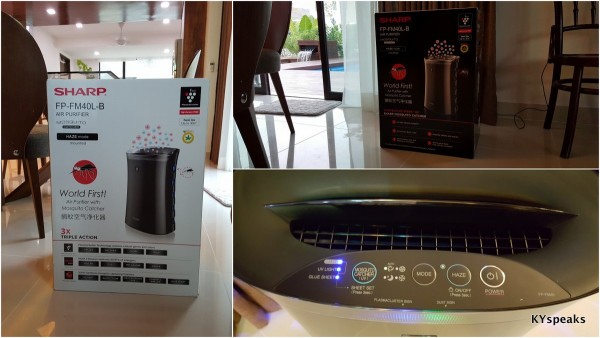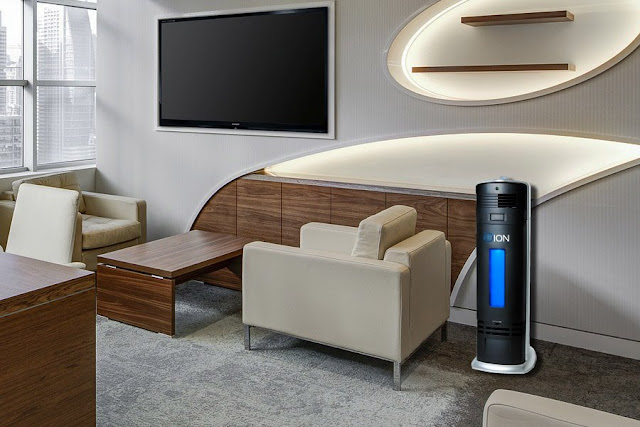Sharp Air Purifier Review – Plasmacluster Ion Technology Efficacy
Our Sharp air purifier review continues with an in-depth examination of the efficiency of Plasmacluster Ion technology, the innovative air purification technology invented by Sharp Corporation in 2000. Conceptually, an efficiency test is one conducted in the laboratory to demonstrate that the reactive agents of a technology, plasmacluster ions in this case, work in practice as opposed to just being a fancy theory demonstrable only with computer animation.
In a typical efficiency experiment, the reactive agents are pumped into a sealed container. The pathogen is injected into the same container. After a certain time period, a sample of the mixture of reactive agent and pathogen is extracted. This "treated" pathogen extract is injected into a laboratory-grown cell culture (Culture A). For control purposes, a sample of "untreated" pathogen is injected into another cell culture (Culture B). After a few days, the two cultures are compared. If the cells in the treated Culture A retain their original cell structures, while cells in the untreated Culture B have become corrupted and damaged, then scientific proof has been obtained that the reactive agents are efficacious or effective.
In the process of our Sharp air purifier review, we viewed many official Sharp advertising videos in which plasascluster ions dramatically encircle and neutralize harmful pathogens. Whilst useful for illustrating activity at the molecular level, these computer animations tend to be less useful for the serious air purifier users who require scientific proof that can, ideally, be independently verifiable. No one wants to buy a sophisticated looking gadget that only burns electricity and does nothing else. No one wants to be rolled into complacency when there may be alternative air purification technologies that really improve indoor air quality.
No one is more aware of these genuine consumer concerns than Sharp Corporation. This is evident from the fact that no one goes to the extent that Sharp has to allay these fears. At last count, with 28 experiments done by various scientific organizations all over the world, Sharp is clearly in the lead. The only thing missing is that there has been no scientific peer review of any of these 28 experiments. Yet, ironically, if Sharp were to arrange for such a review, there is no value in the resultant work. A classic Catch 22 in action.
For the purpose of this Sharp air purifier review, we believe the 28 experiments have value to the discerning consumer. This is because, given that the experiments were conducted by qualified experts in scientific organizations, it is reasonable that a scientific peer review of any one of the experiments should be possible. It is also reasonable to expect that Sharp will not rebuff any genuine attempts to do a proper independent scientific peer review. In a nutshell, this is the crux of Sharp's "academic marketing" for Plasmacluster Ion technology.
For the record, the testing organizations, some of which conducted more than one experiment, were:
- Harvard School of Public Health, USA
- Ishikawa Health Service Association, Japan
- Shanghai Municipal Center for Disease Control and Prevention, China
- Kitasato Research Center of Environmental Sciences, Japan
- CT & T, Aachen University of Applied Science, Germany
- Kitasato Institute, Medical Center Hospital, Japan
- University of Lubeck, Germany
- Graduate School of Advanced Sciences of Matter, Hiroshima University, Japan
- Asthma Society of Canada
- Seoul University, Korea
- Retroscreen Virology, Ltd., London, UK
- Osaka City University Medical School.
Critics of Sharp's technology and other air purification technology should not dogmatically cling to their narrow definition of there being no scientific peer review. They need to recognize the Catch 22 situation that Sharp, and any other air purification manufacturer, is up against. Idealism and perfection can result in the baby being thrown out with the water.
In our Sharp air purifier review, we believe in encouraging constructive criticism. Instead of destructive disdain that hampers and dampens the enthusiasm of researchers seeking state-of-the-art air purification technologies, we urge the relevant parties to leverage on existing work done by the various manufacturers. As a starting point, acknowledging prima facie integrity of the 28 experiences conducted by Sharp is a small but important step in advancing research and development of air purification science. Since it is impossible for any individual air purifier user to conduct efficiency tests, another constructive route is to lobby the relevant authorities to initiate and fund the comprehensive scientific peer reviews of all existing air purification technologies, be they from Sharp or otherwise.



মন্তব্যসমূহ
একটি মন্তব্য পোস্ট করুন